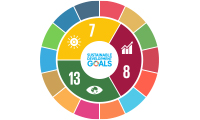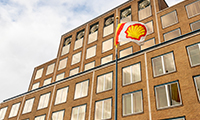Our business strategy
Business Strategy
Shell’s purpose is to power progress together by providing more and cleaner energy solutions. Our strategy is to strengthen our position as a leading energy company by providing oil, gas and low-carbon energy as the world’s energy system transforms. Safety and social responsibility are fundamental to our business approach. Shell will only succeed by working collaboratively with customers, governments, business partners, investors and other stakeholders.
Our strategy is founded on our outlook for the energy sector and the chance to grasp the opportunities arising from the substantial changes in the world around us. The rising standard of living of a growing global population is likely to continue to drive demand for energy, including oil and gas, for years to come. At the same time, technology changes and the need to tackle climate change means there is a transition under way to a lower-carbon energy system with increasing customer choice. We recognise that the pace and specific path forward are uncertain and so require agile decision-making.
Strategic Ambitions
Against this backdrop, we have the following strategic ambitions to guide us in pursuing our purpose:
- to provide a world-class investment case. This involves growing free cash flow and increasing returns, all built upon a strong financial framework and resilient portfolio;
- to thrive in the energy transition by responding to society’s desire for more and cleaner, convenient and competitive energy; and
- to sustain a strong societal licence to operate and make a positive contribution to society through our activities.
Oil
of the world's oil provided by Shell
Customers
customers served at our retail sites on average every day
Capital invested
in 2018
Natural gas
of the world's natural gas provided by Shell
Production
barrels of crude oil equivalent a day in 2018
R&D
invested in research and development in 2018
The execution of our strategy is founded on becoming a more customer-centric and simpler organisation, focused on growing returns and free cash flow. By investing in competitive projects, driving down costs and selling non-core businesses, we are continuously reshaping our portfolio to become more resilient and focused.
Our ability to achieve our strategic ambitions depends on how we respond to competitive forces. We continuously assess the external environment – the markets as well as the underlying economic, political, social and environmental drivers that shape them – to evaluate changes in competitive forces and business models. We use multiple future scenarios to assess the resilience of our strategy. We undertake regular reviews of the markets we operate in and analyse trends and uncertainties, as well as our traditional and non-traditional competitors’ strengths and weaknesses, to understand our competitive position. We maintain business strategies and plans that focus on actions and capabilities to create and sustain competitive advantage. We maintain a risk management framework that regularly assesses our response to, and risk appetite for, identified risk factors.
Our Executive Directors’ remuneration is linked to the successful delivery of our strategy, based on performance indicators that are aligned with shareholder interests. Long-term incentives form the majority of the Executive Directors’ remuneration for above-target performance. Our Long-term Incentive Plan includes cash generation, capital discipline and value created for shareholders.
For more details on our business strategy, see the Business overview section in our Annual Report.
Delivering on our strategy
We refreshed our business strategy in 2016, not long after completing the acquisition of BG, which added significantly to our portfolio in liquefied natural gas (LNG) worldwide as well as deep-water oil and gas production in Brazil. As part of the strategy, we also created a New Energies business to continue to explore investment opportunities in areas including new fuels for transport, such as advanced biofuels, hydrogen and charging for battery-electric vehicles; and power, including from low-carbon sources such as wind and solar, as well as natural gas. In 2017, we continued to reshape Shell as a world-class investment case that could thrive in the energy transition with a strong licence to operate; selling assets not central to our strategy such as our partial divestment of oil sands mines and discontinuing frontier exploration in Arctic waters, while growing free cash flow and reducing debt.
We have continued to make progress in 2018 to deliver a world-class investment. We must maintain our focus and build on the success of our divestment goals, reduction of net debt, the start of share buy-backs and the growth in free cash flow.
During the same period, we continued to position ourselves as a leader among peers in the transition to a lower-carbon future. We expanded our New Energies business and announced a methane emissions intensity target for our oil and gas assets. We worked with the Task Force on Climate-related Financial Disclosures (see Greenhouse gas emissions) and set our ambition to reduce the Net Carbon Footprint of the energy products we sell by around half by the middle of the century and in step with society as it moves towards meeting the goals of the Paris Agreement.
In 2018, we committed to operationalise our ambition of around 50% Net Carbon Footprint reduction by 2050, through the setting of short-term targets linked to executive remuneration. This commitment was made in a joint statement developed with institutional investors on behalf of Climate Action 100+, an initiative led by investors with more than $32 trillion in assets under management. Further, in early 2019, as part of our transparency efforts within remuneration, we have published our CEO Pay Ratio, in line with new legislation. Although this is not required until 2020, we were keen to publish this information early. For full details, please see our Directors’ Remuneration Report in our Annual Report.
We maintained our focus on running a safe, responsible and profitable business. For example, in 2018 we announced our decision to build an LNG facility in British Columbia, Canada. The project was planned and designed by working closely with local communities, First Nations and governments to ensure sustainable development was considered in every aspect of the project. For example, the project has been designed to achieve the lowest carbon intensity of any LNG project in operation today, partly aided by the use of hydropower.
Finally, we announced our ambition to provide a reliable electricity supply to 100 million people in the developing world by 2030 at the One Young World conference in The Hague, the Netherlands (see Access to energy). We continue to work on developing a longer-term strategy to achieve this ambition.
 Our people
Our people
 Sustainable development goals
Sustainable development goals
 About our data
About our data
 Electricity
Electricity